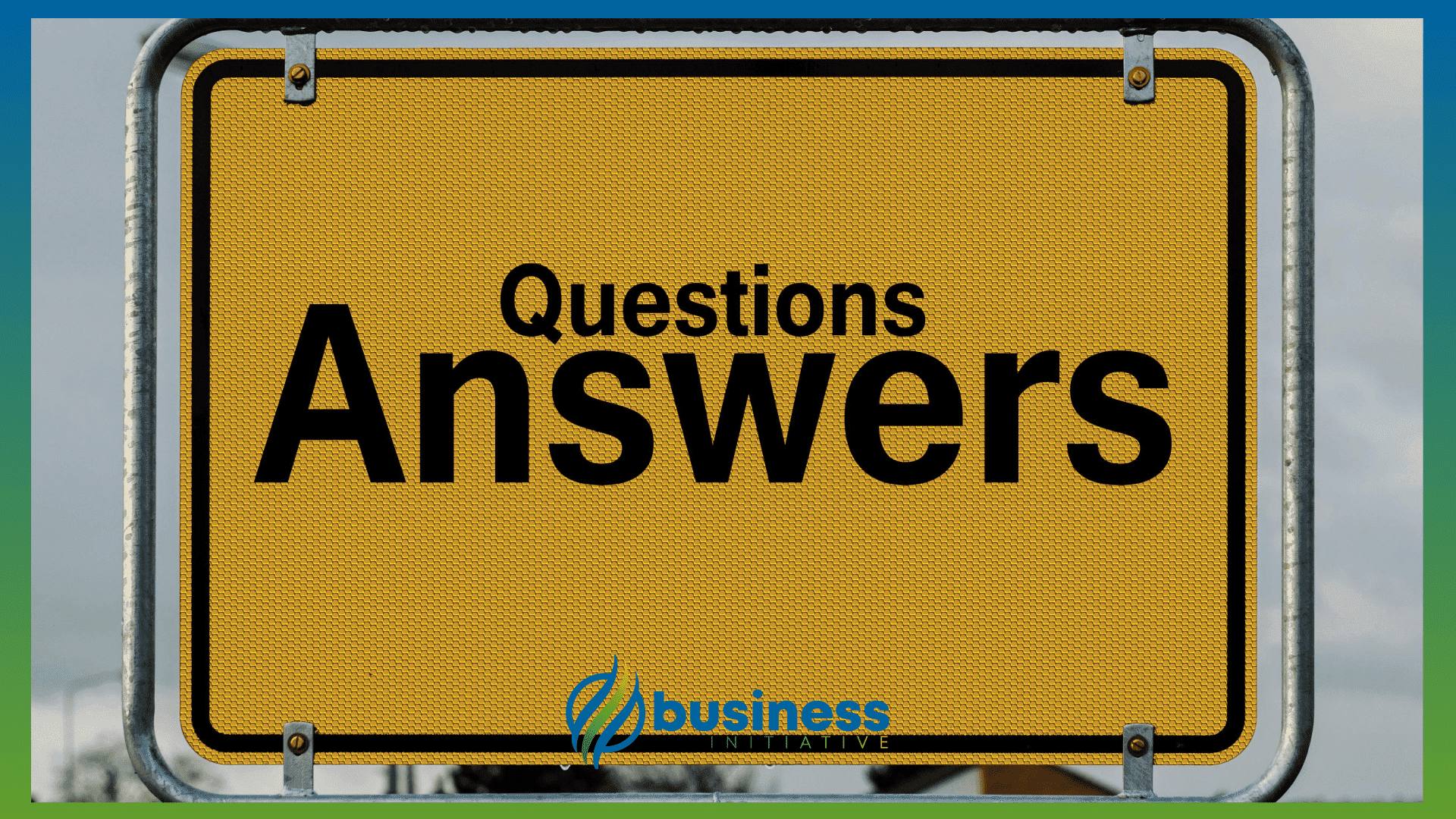Before implementing blockchain technology, it’s essential to understand what it is and how it can benefit your business.
Blockchain is a decentralized, distributed ledger technology that securely records and verifies transactions.
It operates as a shared database that is both transparent and tamper-proof, allowing multiple parties to access and update data in real-time.
 Key Takeaways
Key Takeaways
- Define Objectives and Assemble a Team Outline your goals for integrating blockchain and form a team of experts, including developers, project managers, and industry specialists.
- Research and Design Conduct market research on existing solutions, choose the appropriate consensus mechanism, and design your blockchain architecture, considering factors like scalability and security.
- Develop Smart Contracts and Ensure Compliance Create tailored smart contracts, if applicable, and consult legal experts to ensure regulatory compliance within your jurisdiction.
- Deploy and Educate Stakeholders Deploy your blockchain solution in a controlled environment, then educate stakeholders, including employees and customers, about its benefits and usage.
- Continuously Iterate and Improve Evaluate your solution's performance, gather feedback, and stay informed about advancements in blockchain technology to remain competitive in the long term.
Blockchain Benefits for Your Company
-
Transparency: Blockchain technology provides an unprecedented level of transparency, as all parties can access and verify the transaction history.
-
Security: The decentralized nature of blockchain ensures that no single party controls the data, reducing the risk of fraud and data breaches.
-
Efficiency: Blockchain eliminates the need for intermediaries, streamlining processes and reducing transaction times and costs.
-
Trust: The immutability and transparency of blockchain technology enhance trust among parties involved in transactions.
Practical Instructions to Use Blockchain Technology in Your Business

Step 1: Define Your Business Objectives
Clearly outline the goals you aim to achieve by integrating blockchain technology into your business.
Identify specific pain points or inefficiencies that can be addressed using blockchain.
Step 2: Assemble a Dedicated Team
Form a team of experts with diverse skillsets, including blockchain developers, project managers, and industry specialists.
This team will be responsible for designing, implementing, and maintaining your blockchain solution.
Step 3: Conduct Market Research
Research existing blockchain solutions in your industry to understand their features, benefits, and potential drawbacks.
This will help you determine whether an off-the-shelf solution is suitable or if a custom-built solution is necessary.
Step 4: Choose the Appropriate Consensus Mechanism
Select the consensus mechanism that best aligns with your business requirements.
Common mechanisms include Proof of Work (PoW), Proof of Stake (PoS), Delegated Proof of Stake (DPoS), and Practical Byzantine Fault Tolerance (PBFT).
Step 5: Design Your Blockchain Architecture
Design the structure and components of your blockchain system, such as nodes, data storage methods, APIs, and user interfaces.
Consider factors like scalability, security, and interoperability when designing your architecture.
Step 6: Develop Smart Contracts
If applicable to your use case, create smart contracts tailored to your business processes.
Ensure these contracts are thoroughly tested for functionality and security before deployment.
Step 7: Ensure Regulatory Compliance
Consult legal experts to ensure that your blockchain implementation adheres to relevant laws and regulations within your jurisdiction.
Address any compliance issues before launching the solution.
Step 8: Deploy Your Blockchain Solution
Once all preparations are complete, deploy your blockchain system in a controlled environment initially before rolling it out on a larger scale.
Monitor performance closely during this phase to identify and address any issues that arise.
Step 9: Educate Stakeholders
Ensure all stakeholders, including employees, customers, and partners, are aware of the new blockchain implementation and its benefits.
Provide training materials and support to help them adapt to the new system.
Step 10: Continuously Iterate and Improve
Regularly evaluate your blockchain solution’s performance, gather feedback from users, and make improvements as needed.
Stay informed about advancements in blockchain technology to ensure your business remains competitive in the long term.
How Are Businesses Using Blockchain?

To effectively implement blockchain technology, identify the specific use cases that are most relevant to your business.
Examples of common use cases include:
-
Supply Chain Management: Tracking the movement of goods and services through the supply chain, ensuring transparency, and preventing counterfeit products.
-
Smart Contracts: Automating contractual agreements and reducing the need for intermediaries, thus saving time and money.
-
Identity Management: Providing a secure and efficient means for verifying and managing digital identities.
-
Asset Tokenization: Creating digital tokens representing real-world assets, allowing for more accessible and transparent trading and management.
-
Voting Systems: Ensuring secure, transparent, and tamper-proof voting processes.
Select the Right Blockchain Platform
Once you’ve identified the use cases for your business, choose a suitable blockchain platform that meets your specific needs.

Some popular platforms include:
-
Ethereum: A general-purpose blockchain platform that enables the development of decentralized applications (dApps) and smart contracts.
-
Hyperledger: An open-source, collaborative project that offers several modular blockchain frameworks tailored to specific industry use cases.
-
Ripple: A blockchain platform focused on payment solutions and cross-border transactions.
-
Stellar: A distributed ledger technology platform designed for financial services, offering fast and cost-effective transactions.
Developing a Proof of Concept
Before fully implementing blockchain technology, develop a proof of concept (PoC) to test the feasibility and effectiveness of your chosen solution.

The PoC should:
-
Outline the problem: Clearly define the issue you’re trying to solve with blockchain technology.
-
Design the solution: Develop a detailed plan for implementing the solution, including the necessary processes, technical requirements, and resources.
-
Test the solution: Implement the PoC, gather data, and assess the results to determine whether the solution is effective and practical.
-
Refine the solution: Based on the results of the tests, make any necessary adjustments to improve the solution.
Integrating Blockchain into Your Business Operations
Once your PoC has been successfully tested and refined, integrate the blockchain solution into your business operations.

This process may involve:
- Training staff: Educate your team on blockchain technology and its specific applications within your business.
- Updating processes: Modify existing processes to accommodate the new blockchain solution, ensuring a smooth transition.
- Monitoring performance: Continuously monitor the performance of your blockchain implementation to identify areas for improvement and optimize its effectiveness.
- Adapting to change: As the blockchain landscape evolves, be prepared to adapt your implementation to stay ahead of the competition and leverage new opportunities.
Real Life Examples of Blockchain Implementation by Major Companies
By examining these examples from major companies across various industries, it becomes evident that blockchain technology can offer significant benefits when integrated into existing business operations.
These real-world cases serve as inspiration for businesses considering the adoption of blockchain to improve their processes and gain a competitive advantage.
IBM: Supply Chain Management and Food Safety

IBM has been actively using blockchain technology to improve supply chain management and food safety.
The company’s initiative, IBM Food Trust, is a collaborative network powered by blockchain that connects growers, processors, distributors, retailers, and consumers.
This platform improves traceability, transparency, and efficiency in the food supply chain while reducing the risk of contamination and fraud.
Walmart: Product Tracking

Walmart has also partnered with IBM for implementing blockchain technology in their supply chains.
By utilizing the IBM Food Trust platform, Walmart can trace products from farm to store shelves within seconds.
This enhanced traceability enables faster identification of potential issues—such as contamination or recalls—and reduces response times in case of emergencies.
Maersk: Global Shipping and Logistics

Maersk, one of the world’s largest shipping companies, collaborated with IBM to launch TradeLens—a blockchain-based platform that digitizes global shipping processes.
TradeLens fosters transparency and real-time information exchange among parties involved in international trade transactions.
As a result, it streamlines documentation processes while reducing costs associated with manual paperwork.
De Beers: Diamond Authentication and Tracking

De Beers Group launched Tracr—an end-to-end diamond tracking platform based on blockchain technology.
Tracr assigns a unique digital identity to each diamond registered on its platform, enabling participants across the value chain to verify the authenticity of individual diamonds while ensuring ethical sourcing practices are maintained.
Microsoft: Decentralized Identity Management

Microsoft is developing a decentralized identity management system called ION (Identity Overlay Network) on top of the Bitcoin blockchain.
ION aims to provide users with greater control over their digital identities by allowing them to create verifiable credentials without relying on central authorities or intermediaries.
In Summary…
Implementing blockchain technology into your business requires a thorough understanding of its benefits and applications, selecting the right platform, developing and testing a proof of concept, and integrating the solution into your operations.
By following these practical steps, you can unlock the potential of blockchain technology and gain a competitive edge in your industry.
Don’t miss out on the opportunity to leverage blockchain technology for your business!
Schedule a consultation call with our experts at Business Initiative to discuss how we can help you integrate blockchain solutions tailored to your specific needs.
Reach out to us using our contact form and let’s get started on revolutionizing your operations.
Send Business Initiative a message Tweet to @BisInitiative
Stay ahead of the curve by subscribing to our newsletter, where we share the latest advancements in blockchain technology, industry insights, and practical implementation tips.
FAQs - Frequently Asked Questions About Using Blockchain in Business

What are some common business applications for blockchain technology?
Common applications include supply chain management, smart contracts, and identity management.
Learn More...
Blockchain technology has multiple business applications, offering new opportunities in various sectors:
- Supply Chain Management: Enables real-time tracking and verification of goods from origin to destination.
- Smart Contracts: Automate agreements, reducing intermediary costs and human error.
- Identity Management: Provides a secure, decentralized means of verifying digital identities.
- Asset Tokenization: Converts real-world assets into digital tokens for accessible and transparent trading.
- Voting Systems: Creates tamper-proof and transparent election processes.
How does blockchain improve supply chain management?
Blockchain enables secure, transparent tracking of goods throughout the supply chain.
Learn More...
Blockchain enhances supply chain management by providing a tamper-proof ledger accessible to all participants.
It offers benefits such as transparency, traceability, and efficiency.
For instance, IBM's Food Trust network connects food growers, distributors, and retailers, reducing risks of contamination and counterfeit products.
What are the benefits of implementing smart contracts for businesses?
Smart contracts automate agreements, increasing efficiency and reducing the need for intermediaries.
Learn More...
Smart contracts offer businesses numerous advantages by automating agreements:
- Automation: Self-executing agreements eliminate intermediaries and reduce errors.
- Cost Savings: Reduces administrative costs associated with traditional contracts.
- Security: Relies on blockchain technology to ensure transactions are tamper-proof.
- Time Efficiency: Instantaneous execution streamlines business operations.
How can businesses ensure regulatory compliance when using blockchain?
Consult legal experts and ensure that your blockchain solution adheres to relevant laws and regulations.
Learn More...
Businesses can ensure regulatory compliance by following these steps:
Consult legal experts specializing in fintech to identify jurisdiction-specific compliance issues.
Maintain transparent records to meet regulatory requirements.
Adopt Know Your Customer (KYC) and Anti-Money Laundering (AML) practices.
Monitor evolving blockchain regulations to stay up-to-date.
What is a consensus mechanism, and why is it important in blockchain?
A consensus mechanism ensures agreement on the state of the blockchain ledger among network participants.
Learn More...
A consensus mechanism is crucial for blockchain security and performance.
It ensures that all network participants agree on the state of the ledger.
Common mechanisms include Proof of Work (PoW), Proof of Stake (PoS), and Practical Byzantine Fault Tolerance (PBFT).
Selecting the right mechanism is critical for maintaining security, scalability, and efficiency.
How can blockchain increase transparency in business operations?
Blockchain creates a tamper-proof ledger that all parties can access, reducing fraud and increasing trust.
Learn More...
Blockchain offers transparency to business operations by creating a secure, tamper-proof ledger that benefits businesses.
It builds trust among partners by ensuring data integrity and visibility.
Blockchain reduces opportunities for fraud due to its immutable, distributed nature.
Accurate, auditable records help with regulatory compliance, and transparency enhances customer satisfaction.


